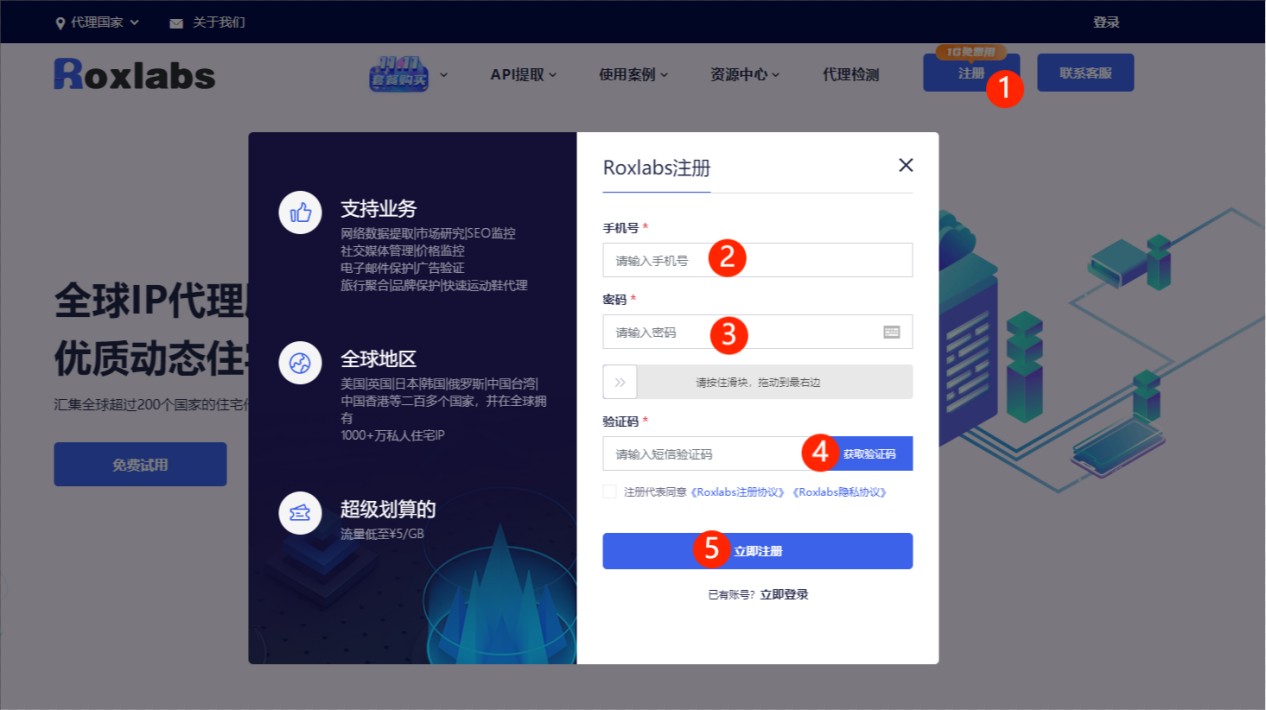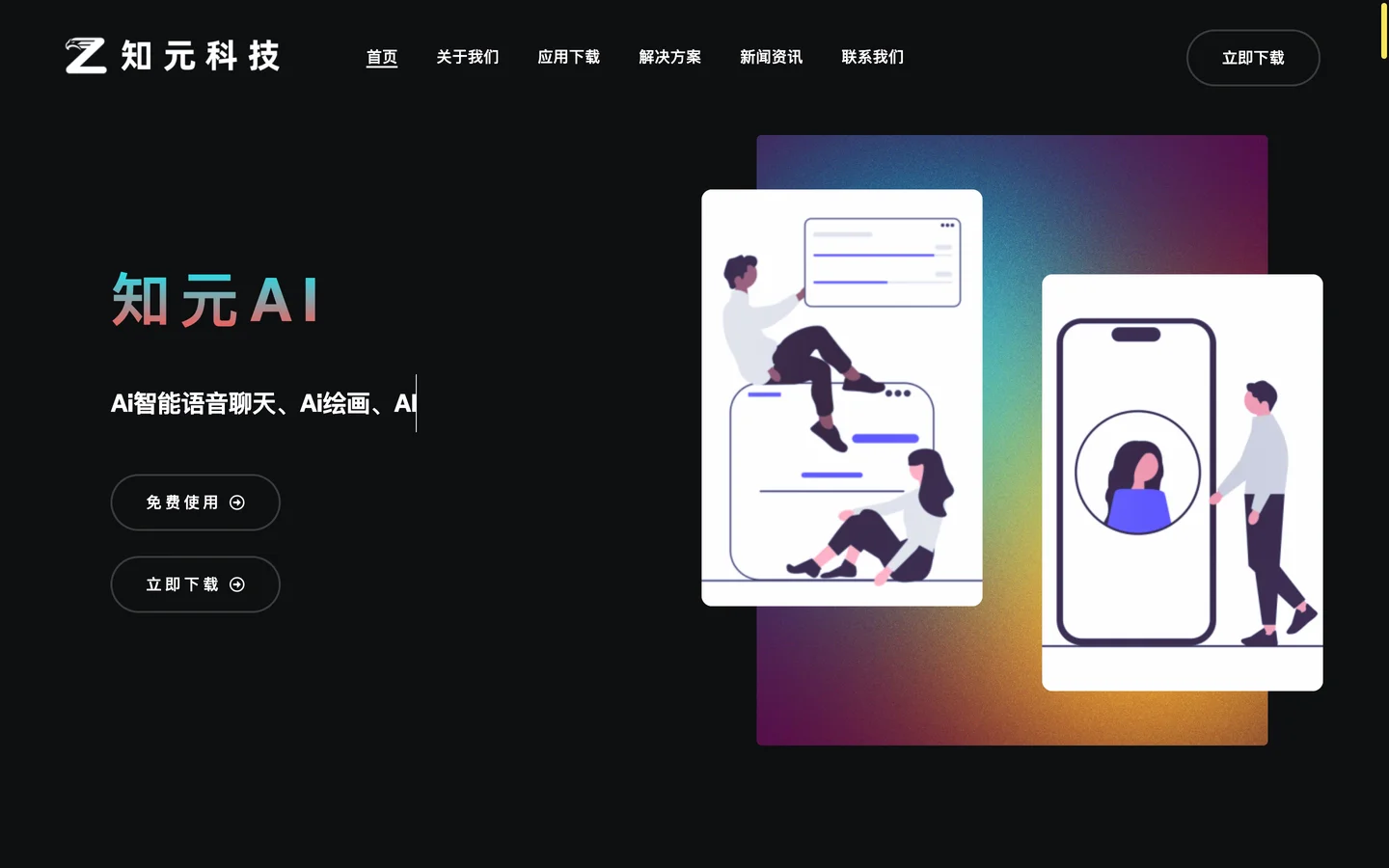深度解析!AI应用架构师的智能办公AI助手设计秘籍
引言:智能办公AI助手的时代已经到来
在数字化转型浪潮席卷全球的今天,人工智能技术正深刻改变着我们的工作方式。作为一名拥有15年经验的软件架构师,我见证了办公自动化从简单脚本到智能助手的演进历程。如今,随着大语言模型(LLM)技术的突破性发展,智能办公AI助手已经从科幻变为现实,正在重塑企业生产力和知识工作者的日常体验。
本文将从架构设计的角度,深入探讨智能办公AI助手的设计理念、核心技术、系统架构和实现方法。无论你是希望构建企业级AI助手的架构师,还是对AI应用开发感兴趣的工程师,抑或是想了解如何有效利用AI提升团队效率的技术管理者,这篇深度指南都将为你提供宝贵的 insights 和实践指导。
本文核心收益:
- 掌握智能办公AI助手的完整架构设计方法论
- 深入理解LLM在企业环境中的应用模式与最佳实践
- 学习如何设计安全、可靠、可扩展的AI助手系统
- 获取构建企业级AI助手的技术栈选择与实现路径
- 了解智能办公AI助手的未来发展趋势与挑战应对策略
第一章:智能办公AI助手的核心架构设计
1.1 智能办公AI助手的定义与价值主张
智能办公AI助手是一种集成了自然语言处理、知识检索、任务自动化和多模态交互能力的智能系统,旨在帮助知识工作者更高效地完成日常办公任务。它不仅是一个工具,更是一个能够理解上下文、学习用户习惯、协同完成复杂工作流的"数字同事"。
核心价值主张:
- 效率倍增:自动化重复性工作,减少80%的事务性操作时间
- 知识增强:打破信息孤岛,让组织知识触手可及
- 决策辅助:基于数据分析提供智能建议,提升决策质量
- 无缝协作:连接人与系统、人与人,促进团队协同
- 个性化体验:适应不同用户的工作风格和需求
1.2 核心架构组件解析
一个企业级智能办公AI助手系统包含以下核心组件,这些组件协同工作,提供完整的智能办公体验:
1. 用户交互层
- 多模态界面:Web端、移动端、桌面客户端、语音助手
- 支持文本、语音、图像等多种交互方式
- 上下文保持与会话管理
2. API网关/负载均衡
- 请求路由与负载均衡
- 认证授权与流量控制
- 请求限流与安全过滤
- API版本管理
3. 核心服务层
- 意图理解服务:识别用户需求和意图
- 对话管理服务:维护对话状态和上下文
- 自然语言生成服务:生成自然、流畅的响应
- 多模态处理服务:处理和生成图像、语音等内容
4. 数据处理层
- 数据抽取与转换
- 文本处理与分析
- 结构化与非结构化数据处理
- 数据清洗与标准化
5. 任务执行层
- 工作流引擎:编排和执行复杂任务
- 自动化脚本执行器:运行预定义或动态生成的脚本
- 事件处理与触发器:基于事件触发相应操作
- 定时任务调度器:管理周期性任务
6. 知识管理层
- 向量嵌入服务:将文本转换为向量表示
- 语义检索引擎:基于向量相似性查找相关信息
- 知识图谱管理:构建和维护实体关系网络
- 文档解析与索引:处理各类办公文档
7. 学习与优化层
- 用户行为分析:收集和分析用户交互数据
- 反馈学习系统:基于用户反馈优化响应质量
- 个性化推荐引擎:推荐相关信息和功能
- 模型性能监控与优化:持续提升系统智能度
8. 数据存储层
- 关系型数据库:存储结构化数据如用户信息、配置等
- 向量数据库:存储文档和知识的向量表示
- 文档存储:存储原始文档和文件
- 缓存系统:加速频繁访问数据的检索
- 时序数据库:存储用户交互日志和系统性能数据
9. 外部系统集成层
- 办公软件集成:Microsoft 365, Google Workspace, 钉钉, 企业微信等
- 企业系统集成:CRM, ERP, HR系统, 项目管理工具等
- API适配器:标准化不同系统的接口
- 数据同步服务:保持跨系统数据一致性
10. 安全与权限控制
- 身份认证与授权
- 数据加密与隐私保护
- 访问控制与权限管理
- 审计日志与合规性检查
1.3 架构设计原则与考量因素
设计企业级智能办公AI助手时,应遵循以下架构原则:
1. 松耦合,高内聚
- 各组件通过明确定义的API通信
- 组件内部高度相关,组件之间低耦合
- 支持独立部署和升级
2. 可扩展性
- 水平扩展能力:支持增加实例应对负载增长
- 功能扩展能力:易于添加新功能和服务
- 集成扩展能力:方便对接新的外部系统
// 可扩展设计示例:使用策略模式支持多种文档处理器
public interface DocumentProcessor {
ProcessedDocument process(InputStream documentStream, String mimeType);
}
public class PDFDocumentProcessor implements DocumentProcessor {
@Override
public ProcessedDocument process(InputStream documentStream, String mimeType) {
// PDF处理逻辑
}
}
public class WordDocumentProcessor implements DocumentProcessor {
@Override
public ProcessedDocument process(InputStream documentStream, String mimeType) {
// Word处理逻辑
}
}
// 工厂模式实现处理器动态选择
public class DocumentProcessorFactory {
private final Map<String, DocumentProcessor> processors = new HashMap<>();
// 注册新处理器,实现扩展
public void registerProcessor(String mimeType, DocumentProcessor processor) {
processors.put(mimeType, processor);
}
public DocumentProcessor getProcessor(String mimeType) {
return processors.getOrDefault(mimeType, new DefaultDocumentProcessor());
}
}
3. 可靠性与容错性
- 服务降级机制:核心功能在部分服务不可用时仍可工作
- 重试与超时控制:处理临时故障
- 数据备份与恢复:防止数据丢失
- 监控与告警:及时发现和响应问题
4. 安全性与隐私保护
- 端到端加密:保护数据传输安全
- 数据脱敏:处理敏感信息
- 细粒度权限控制:基于角色和上下文的访问控制
- 合规性设计:满足GDPR、CCPA等法规要求
5. 可观测性
 全面监控:系统性能、服务健康度、用户体验
全面监控:系统性能、服务健康度、用户体验- 分布式追踪:跟踪请求在各组件间的流转
- 日志聚合:集中收集和分析系统日志
- 性能指标:延迟、吞吐量、错误率等关键指标
6. 成本优化
- 资源弹性伸缩:根据负载动态调整资源
- 缓存策略:减少重复计算和访问
- 批处理优化:高效处理批量操作
- 模型选择策略:根据任务复杂度选择合适模型
1.4 典型架构模式对比
在设计智能办公AI助手时,有几种常见的架构模式可供选择,各有其适用场景和优缺点:
1. 单体架构
- 特点:所有功能模块打包为单一应用
- 优点:开发简单、部署容易、初期维护成本低
- 缺点:扩展性差、技术栈受限、故障影响范围大
- 适用场景:小型团队、MVP阶段、功能简单的助手
2. 微服务架构
- 特点:将系统拆分为独立部署的小型服务
- 优点:松耦合、独立扩展、技术栈灵活、故障隔离
- 缺点:部署复杂、服务间通信开销、分布式事务挑战
- 适用场景:中大型企业、功能复杂、团队规模大
3. 服务网格架构
- 特点:在微服务基础上增加专门的基础设施层
- 优点:透明的服务通信、统一监控和追踪、流量管理
- 缺点:增加系统复杂度、学习曲线陡峭
- 适用场景:大型企业、服务数量多、对可观测性要求高
4. 云原生无服务器架构(Serverless)
- 特点:基于函数计算,无需管理服务器
- 优点:按需付费、自动扩展、运维简单
- 缺点:冷启动延迟、执行时间限制、调试复杂
- 适用场景:事件驱动型任务、流量波动大的场景
5. 混合架构
- 特点:结合多种架构模式,核心服务采用微服务,非核心功能采用Serverless
- 优点:兼顾性能与成本、灵活适应不同场景
- 缺点:架构设计复杂、运维要求高
- 适用场景:大多数企业级智能办公AI助手系统
架构选择决策框架:
def choose_architecture(team_size, expected_users, feature_complexity,
budget_constraints, development_speed):
"""
基于关键因素选择合适的架构
参数:
- team_size: 开发团队规模 (小:1-5人, 中:6-20人, 大:20+人)
- expected_users: 预期用户数量
- feature_complexity: 功能复杂度 (低, 中, 高)
- budget_constraints: 预算约束 (紧, 中等, 充足)
- development_speed: 开发速度需求 (快, 中, 慢)
返回:
- 推荐的架构类型
"""
if development_speed == "快" and team_size == "小" and feature_complexity == "低":
return "单体架构"
elif team_size == "中" and feature_complexity == "中" and expected_users < 10000:
return "微服务架构"
elif team_size == "大" and feature_complexity == "高" and expected_users >= 10000:
return "服务网格架构"
elif budget_constraints == "紧" and expected_users波动大:
return "Serverless架构"
else:
return "混合架构" # 默认推荐
对于大多数企业级智能办公AI助手项目,我推荐采用混合架构:
- 核心服务(意图理解、对话管理、知识检索)采用微服务架构,确保性能和可靠性
- 事件驱动型任务(通知、提醒、定期报告)采用Serverless架构,优化成本
- 对于资源密集型任务(如大规模文档处理),可考虑批处理架构
1.5 架构安全设计考量
安全是企业级AI助手设计的首要考量因素之一,尤其是在处理敏感办公数据时。以下是关键安全设计要点:
1. 多层次身份认证与授权
- 支持SSO单点登录,集成企业身份提供商
- 实施基于角色(RBAC)和属性(ABAC)的访问控制
- 多因素认证(MFA)保护敏感操作
- 会话管理与安全令牌处理
# 权限检查示例代码
def check_permission(user, resource, action):
"""检查用户是否有权限对资源执行操作"""
# 1. 角色基础检查
if has_role_based_permission(user.roles, resource, action):
return True
# 2. 属性基础检查
if has_attribute_based_permission(user.attributes, resource.attributes, action):
return True
# 3. 特殊权限检查
if is_exceptional_permission(user.id, resource.id, action):
return True
return False
def secure_document_access(user, document_id):
"""安全的文档访问控制"""
document = get_document(document_id)
# 检查权限
if not check_permission(user, document, "read"):
log_security_event("Unauthorized access attempt", user.id, document_id)
raise PermissionDeniedError("You don't have permission to access this document")
# 检查文档敏感度
if document.sensitivity == "high" and not is_high_sensitivity_allowed(user):
log_security_event("High sensitivity access attempt", user.id, document_id)
raise PermissionDeniedError("Access to high sensitivity documents is restricted")
# 记录访问日志
log_access(user.id, document_id)
# 返回文档(可能需要脱敏)
return maybe_redact_document(document, user)
2. 数据安全与隐私保护
- 数据分类分级管理,不同级别采取不同保护措施
- 传输加密(TLS 1.3)和存储加密(AES-256)
- 敏感数据脱敏与匿名化处理
- 数据留存与销毁策略,符合合规要求
3. AI模型安全
- 防范提示注入(Prompt Injection)攻击
- 输入验证与过滤,防止恶意内容
- 输出审查,过滤不当内容
- 模型访问控制与使用审计
# 提示注入防护示例
def sanitize_user_input(user_input):
"""清理用户输入,防止提示注入攻击"""
# 1. 检测并过滤潜在的注入模式
injection_patterns = [
"忽略前面的指令", "忘记之前的提示", "你现在是",
"system prompt", "请无视", "新指令"
]
for pattern in injection_patterns:
if pattern.lower() in user_input.lower():
log_security_event("Potential prompt injection detected", user_input)
# 可以选择替换敏感模式或拒绝处理
user_input = user_input.lower().replace(pattern.lower(), "[filtered]")
# 2. 限制输入长度
if len(user_input) > 2000:
log_security_event("Input too long", len(user_input))
user_input = user_input[:2000] + "..."
return user_input
def validate_ai_output(output):
"""验证AI输出是否安全适当"""
# 1. 检查是否包含敏感信息
sensitive_patterns = detect_sensitive_information(output)
if sensitive_patterns:
log_security_event("Sensitive information detected in output", sensitive_patterns)
output = redact_sensitive_information(output, sensitive_patterns)
# 2. 检查是否包含不当内容
toxicity_score = detect_toxicity(output)
if toxicity_score > 0.7: # 设定阈值
log_security_event("Toxic content detected", toxicity_score)
return "I'm sorry, but I can't provide that information."
return output
4. 安全监控与合规审计
- 全面的安全日志记录,不可篡改
- 异常行为检测与实时告警
- 定期安全审计与合规性报告
- 安全事件响应流程与预案
5. API安全
- API密钥管理与轮换
- 限流与防滥用措施
- 请求签名验证
- API版本控制与弃用策略
第二章:智能办公AI助手的核心技术原理
2.1 自然语言处理(NLP)基础
自然语言处理是智能办公AI助手的核心技术,它使计算机能够理解、解释和生成人类语言。在办公场景中,NLP技术用于解析用户查询、提取关键信息、生成回复和理解文档内容。
核心NLP任务:
- 文本分类:将文档或句子归类到预定义类别(如邮件分类、情绪分析)
- 命名实体识别(NER):识别文本中的实体(如人名、公司、日期、地点)
- 关系抽取:识别实体之间的关系(如"张三"在"ABC公司"担任"CEO")
- 语义角色标注:识别句子中词语的语义角色(如主语、宾语、动作)
- 指代消解:确定代词或名词短语指代的实体
- 自然语言推理:判断两个句子之间的逻辑关系(如蕴含、矛盾、中立)
NLP处理流程:
文本预处理示例代码:
import re
import string
import nltk
from nltk.tokenize import word_tokenize
from nltk.stem import WordNetLemmatizer
from nltk.corpus import stopwords
# 下载必要的资源
nltk.download('punkt')
nltk.download('wordnet')
nltk.download('stopwords')
class TextPreprocessor:
def __init__(self):
self.lemmatizer = WordNetLemmatizer()
self.stop_words = set(stopwords.words('english'))
# 添加办公场景特定的停用词
self.office_stop_words = {"please", "kindly", "hi", "hello", "thanks", "thank", "regards"}
self.stop_words.update(self.office_stop_words)
def preprocess(self, text):
"""对文本进行完整预处理"""
# 1. 转小写
text = text.lower()
# 2. 移除HTML标签
text = re.sub(r'<.*?>', '', text)
# 3. 移除URLs
text = re.sub(r'https?://\S+|www\.\S+', '', text)
# 4. 移除电子邮件地址
text = re.sub(r'\S+@\S+', '', text)
# 5. 移除特殊字符和数字
text = re.sub(r'[^a-zA-Z\s]', '', text)
# 6. 分词
tokens = word_tokenize(text)
# 7. 移除停用词和短词
tokens = [token for token in tokens if token not in self.stop_words and len(token) > 2]
# 8. 词形还原
tokens = [self.lemmatizer.lemmatize(token) for token in tokens]
# 9. 重新组合为字符串
processed_text = ' '.join(tokens)
return processed_text
# 使用示例
preprocessor = TextPreprocessor()
raw_email = """
Hi Team,
Please review the Q3 sales report attached to this email.
The meeting to discuss the results will be on Friday at 2 PM in conference room A.
Best regards,
John Doe
"""
processed_text = preprocessor.preprocess(raw_email)
print(processed_text)
# 输出: "review q3 sales report attached email meeting discuss result friday pm conference room"
2.2 大语言模型(LLM)在办公场景的应用
大语言模型(LLM)如GPT-4、Claude、Llama等,是智能办公AI助手的核心引擎。这些模型通过学习海量文本数据,能够理解上下文、生成连贯文本、回答问题和执行复杂推理任务。
LLM在办公场景的核心应用模式:
1. 提示工程(Prompt Engineering)
精心设计提示,引导模型生成所需输出。在办公场景中,这包括:
- 指令提示:明确告诉模型要执行的任务
- 上下文提示:提供相关背景信息
- 示例提示(Few-shot Learning):提供少量示例引导模型行为
- 思维链提示(Chain-of-Thought):引导模型进行逐步推理
def create_meeting_summary_prompt(transcript, meeting_type="regular"):
"""为会议记录生成摘要的提示"""
# 基础提示模板
base_prompt = """你是一位专业的会议记录助手。请根据以下会议记录生成一份结构化摘要。
要求:
1. 用简洁明了的语言总结会议主要内容
2. 提取关键决策点
3. 列出所有行动项,包括负责人和截止日期
4. 识别任何潜在风险或需要关注的问题
"""
# 根据会议类型添加特定指令
if meeting_type == "strategic":
base_prompt += "5. 特别关注战略方向和长期目标\n"
elif meeting_type == "project":
base_prompt += "5. 特别关注项目进度、里程碑和阻碍因素\n"
elif meeting_type == "decision":
base_prompt += "5. 特别清晰地记录所有决策和分歧点\n"
# 添加会议记录
base_prompt += f"会议记录:\n{transcript}\n\n结构化摘要:"
return base_prompt
# 思维链提示示例:复杂问题解决
def create_complex_problem_solving_prompt(problem_description):
"""为复杂问题解决创建思维链提示"""
prompt = """请帮助分析并解决以下办公问题。采用系统化思考方法,逐步分析并提供解决方案。
问题: {problem}
请按照以下步骤思考:
1. 明确问题的核心是什么?
2. 可能的原因有哪些?
3. 每个原因的可能性和影响程度如何?
4. 针对主要原因,可能的解决方案有哪些?
5. 每个解决方案的优缺点是什么?
6. 推荐的解决方案和实施步骤是什么?
请详细展示你的思考过程,然后给出最终建议。"""
return prompt.format(problem=problem_description)
2. 检索增强生成(RAG)
将外部知识库与LLM结合,解决模型知识截止和幻觉问题:
RAG系统实现关键步骤:
- 文档预处理与分块
- 文本向量化与存储
- 查询向量化与相似性检索
- 上下文整合与提示构建
- 响应生成与优化
3. 微调(Fine-tuning)
针对特定办公场景和任务,对基础模型进行微调,提高性能:
- 领域微调:使用公司内部文档和语料微调,使模型熟悉公司术语和流程
- 任务微调:针对特定任务(如邮件分类、报告生成)进行微调
- 参数高效微调:使用LoRA、QLoRA等技术,在有限资源下进行有效微调
4. 模型评估与选择
为办公场景选择合适的LLM需要考虑多个因素:
def evaluate_llm_for_office_task(model, task_type, evaluation_data):
"""评估LLM在特定办公任务上的表现"""
metrics = {
"accuracy": 0, # 任务完成准确度
"relevance": 0, # 输出与任务的相关性
"conciseness": 0, # 表达简洁度
"professionalism": 0, # 专业程度(符合办公场景)
"speed": 0, # 响应速度
"hallucination_rate": 0 # 幻觉内容比例
}
# 运行评估
total_samples = len(evaluation_data)
for sample in evaluation_data:
prompt = sample["prompt"]
expected_output = sample["expected_output"]
# 计时
start_time = time.time()
output = model.generate(prompt)
end_time = time.time()
# 计算指标
metrics["accuracy"] += calculate_accuracy(output, expected_output)
metrics["relevance"] += calculate_relevance(output, prompt)
metrics["conciseness"] += calculate_conciseness(output)
metrics["professionalism"] += calculate_professionalism(output)
metrics["speed"] += (end_time - start_time)
metrics["hallucination_rate"] += detect_hallucinations(output, sample["context"])
# 计算平均值
for metric in metrics:
if metric == "speed":
metrics[metric] = metrics[metric] / total_samples # 平均响应时间
elif metric == "hallucination_rate":
metrics[metric] = metrics[metric] / total_samples # 平均幻觉率
else:
metrics[metric] = metrics[metric] / total_samples * 100 # 转为百分比
# 任务特定加权得分
weights = get_task_specific_weights(task_type)
overall_score = sum(metrics[metric] * weights[metric] for metric in metrics)
metrics["overall_score"] = overall_score
return metrics
def select_best_llm(task_type, candidate_models, evaluation_data):
"""为特定办公任务选择最佳LLM"""
best_model = None
best_score = -1
evaluation_results = {}
for model_name, model in candidate_models.items():
print(f"Evaluating {model_name} for {task_type} task...")
metrics = evaluate_llm_for_office_task(model, task_type, evaluation_data)
evaluation_results[model_name] = metrics
if metrics["overall_score"] > best_score:
best_score = metrics["overall_score"]
best_model = model_name
return best_model, evaluation_results
2.3 知识图谱构建与应用
知识图谱是表示实体及其关系的结构化数据模型,在智能办公AI助手中用于组织和检索企业知识。
知识图谱在办公场景的价值:
- 提供结构化的组织知识表示
- 支持复杂关系查询(如"谁认识能解决这个技术问题的人?")
- 增强实体理解(如识别文档中的项目名称、产品型号等)
- 支持智能推荐(如"基于您正在处理的项目,您可能需要这些文档")
办公知识图谱的核心实体类型:
- 人员(员工、客户、合作伙伴)
- 组织(部门、团队、公司)
- 项目(项目名称、任务、里程碑)
- 文档(报告、邮件、演示文稿)
- 概念(产品、服务、技术)
- 事件(会议、截止日期、发布)
知识图谱构建流程:
class OfficeKnowledgeGraph:
def __init__(self, graph_db_connection):
self.graph_db = graph_db_connection
def extract_entities_and_relations(self, text):
"""从文本中提取实体和关系"""
# 使用NLP模型提取实体和关系
# 在实际实现中,这里会调用专门的NER和关系抽取模型
entities = extract_entities(text)
relations = extract_relations(text, entities)
return entities, relations
def add_document_to_graph(self, document):
"""将文档添加到知识图谱"""
# 1. 创建文档节点
doc_node_id = self._create_document_node(document)
# 2. 从文档内容提取实体和关系
entities, relations = self.extract_entities_and_relations(document.content)
# 3. 添加实体节点
entity_ids = {}
for entity in entities:
entity_id = self._get_or_create_entity_node(entity)
entity_ids[entity["id"]] = entity_id
# 4. 创建文档与实体的关系
self.graph_db.create_relationship(
doc_node_id,
entity_id,
"MENTIONS",
{"relevance": entity["relevance_score"]}
)
# 5. 添加实体间关系
for relation in relations:
if relation["source_id"] in entity_ids and relation["target_id"] in entity_ids:
self.graph_db.create_relationship(
entity_ids[relation["source_id"]],
entity_ids[relation["target_id"]],
relation["type"],
relation["properties"]
)
# 6. 添加文档元数据关系(作者、创建时间等)
if document.author:
author_id = self._get_or_create_person_node(document.author)
self.graph_db.create_relationship(
author_id,
doc_node_id,
"CREATED",
{"date": document.created_at}
)
return doc_node_id
def query_related_documents(self, entity_id, limit=10):
"""查询与特定实体相关的文档"""
query = """
MATCH (e:Entity)-[r:MENTIONS]-(d:Document)
WHERE e.id = $entity_id
RETURN d.id, d.title, d.created_at, r.relevance
ORDER BY r.relevance DESC, d.created_at DESC
LIMIT $limit
"""
results = self.graph_db.run_query(query, {"entity_id": entity_id, "limit": limit})
return results
def find_expertise(self, topic):
"""查找特定主题的专家"""
query = """
MATCH (p:Person)-[:AUTHORED]->(d:Document)-[r:MENTIONS]->(t:Topic)
WHERE t.name CONTAINS $topic
WITH p, SUM(r.relevance) AS expertise_score
ORDER BY expertise_score DESC
RETURN p.name, p.email, expertise_score
LIMIT 5
"""
results = self.graph_db.run_query(query, {"topic": topic})
return results
# 辅助方法实现...
def _create_document_node(self, document):
# 创建文档节点的实现
pass
def _get_or_create_entity_node(self, entity):
# 获取或创建实体节点的实现
pass
def _get_or_create_person_node(self, person):
# 获取或创建人员节点的实现
pass
2.4 多模态交互技术
现代智能办公AI助手需要支持文本、语音、图像等多种交互方式,即多模态交互。这大大提升了用户体验和使用场景范围。
核心多模态技术组件:
1. 语音交互
- 语音识别(ASR):将语音转换为文本
- 语音合成(TTS):将文本转换为自然语音
- 声纹识别:用户身份验证
- 语音活动检测:识别何时有人说话
2. 图像理解
- 文档扫描与OCR:识别文档中的文本
- 图像分类:识别图像内容类型
- 目标检测:识别图像中的特定对象
- 表格识别:从图像中提取表格数据
3. 视频处理
- 视频会议分析:识别参会人员、情绪、注意力
- 屏幕内容识别:理解演示文稿和共享屏幕内容
- 动作识别:检测特定动作(如举手提问)
多模态交互系统架构:
多模态文档处理示例:
class MultimodalDocumentProcessor:
def __init__(self):
# 初始化各模态处理器
self.text_processor = TextProcessor()
self.image_processor = ImageProcessor()
self.table_extractor = TableExtractor()
self.pdf_parser = PDFParser()
def process_document(self, file_path, file_type=None):
"""处理多模态文档,提取各种信息"""
if not file_type:
file_type = self._detect_file_type(file_path)
# 根据文件类型选择合适的解析器
if file_type == "pdf":
document_elements = self.pdf_parser.parse(file_path)
elif file_type in ["docx", "doc"]:
document_elements = self._parse_word_document(file_path)
elif file_type in ["pptx", "ppt"]:
document_elements = self._parse_powerpoint(file_path)
else:
raise UnsupportedFileFormatError(f"Unsupported file format: {file_type}")
# 处理各元素并提取信息
processed_data = {
"text_content": "",
"images": [],
"tables": [],
"metadata": {},
"entities": [],
"key_points": []
}
for element in document_elements:
if element["type"] == "text":
processed_text = self.text_processor.process(element["content"])
processed_data["text_content"] += processed_text + "\n"
# 提取文本中的实体
entities = self.text_processor.extract_entities(element["content"])
processed_data["entities"].extend(entities)
elif element["type"] == "image":
# 处理图像
image_analysis = self.image_processor.analyze_image(element["content"])
processed_data["images"].append({
"id": element["id"],
"description": image_analysis["description"],
"objects": image_analysis["objects"],
"text": image_analysis["ocr_text"],
"page": element["page"]
})
# 将图像描述和OCR文本添加到整体文本内容
processed_data["text_content"] += image_analysis["description"] + "\n"
processed_data["text_content"] += image_analysis["ocr_text"] + "\n"
elif element["type"] == "table":
# 处理表格
table_data = self.table_extractor.extract_table(element["content"])
processed_data["tables"].append({
"id": element["id"],
"data": table_data,
"page": element["page"],
"summary": self.table_extractor.summarize_table(table_data)
})
# 将表格摘要添加到文本内容
processed_data["text_content"] += table_data["summary"] + "\n"
# 提取关键要点
processed_data["key_points"] = self.text_processor.extract_key_points(
processed_data["text_content"]
)
# 去重实体
processed_data["entities"] = self._deduplicate_entities(processed_data["entities"])
return processed_data
def _detect_file_type(self, file_path):
"""检测文件类型"""
ext = os.path.splitext(file_path)[1].lower()[1:]
return ext
def _parse_word_document(self, file_path):
"""解析Word文档"""
# 实现Word文档解析逻辑
pass
def _parse_powerpoint(self):
"""解析PowerPoint演示文稿"""
# 实现PowerPoint解析逻辑
pass
def _deduplicate_entities(self, entities):
"""去重实体列表"""
# 实现实体去重逻辑
pass
2.5 上下文理解与记忆机制
上下文理解是智能办公AI助手的关键能力,它使助手能够理解多轮对话中的上下文关系,提供连贯一致的响应。
上下文的类型:
- 对话上下文:当前对话的历史记录
- 用户上下文:用户的身份、偏好、历史行为
- 文档上下文:当前正在处理的文档内容
- 环境上下文:时间、地点、设备、当前任务状态
- 组织上下文:公司政策、团队结构、项目信息
上下文管理策略:
1. 上下文表示
将不同类型的上下文编码为模型可理解的表示形式:
class ContextManager:
def __init__(self, max_dialog_history=10, embedding_model=None):
self.max_dialog_history = max_dialog_history # 最大对话历史轮数
self.embedding_model = embedding_model or DefaultEmbeddingModel()
# 上下文存储
self.user_contexts = {} # 用户上下文
self.session_contexts = {} # 会话上下文
def create_session_context(self, session_id, user_id):
"""创建新的会话上下文"""
# 获取用户上下文
user_context = self._get_or_create_user_context(user_id)
# 创建会话上下文
self.session_contexts[session_id] = {
"session_id": session_id,
"user_id": user_id,
"dialog_history": [],
"active_documents": {}, # 当前活动文档
"current_task": None, # 当前任务
"environment": {}, # 环境信息
"timestamp": datetime.now()
}
return self.session_contexts[session_id]
def update_dialog_context(self, session_id, user_message, assistant_response=None):
"""更新对话上下文"""
if session_id not in self.session_contexts:
raise ValueError(f"Session {session_id} not found")
session_context = self.session_contexts[session_id]
# 添加用户消息
dialog_turn = {
"role": "user",
"content": user_message,
"timestamp": datetime.now()
}
session_context["dialog_history"].append(dialog_turn)
# 添加助手响应(如果提供)
if assistant_response:
assistant_turn = {
"role": "assistant",
"content": assistant_response,
"timestamp": datetime.now()
}
session_context["dialog_history"].append(assistant_turn)
# 确保对话历史不超过最大限制
if len(session_context["dialog_history"]) > self.max_dialog_history * 2: # 每轮包含用户和助手消息
# 保留最新的max_dialog_history轮对话
session_context["dialog_history"] = session_context["dialog_history"][-self.max_dialog_history*2:]
# 更新时间戳
session_context["timestamp"] = datetime.now()
return session_context
def add_active_document(self, session_id, document_id, document_metadata):
"""添加活动文档到上下文"""
if session_id not in self.session_contexts:
raise ValueError(f"Session {session_id} not found")
session_context = self.session_contexts[session_id]
# 为文档生成嵌入(如果有内容)
if "content" in document_metadata and document_metadata["content"]:
document_embedding = self.embedding_model.embed(
document_metadata["content"][:10000] # 限制嵌入内容长度
)
else:
document_embedding = None
# 添加文档到活动文档
session_context["active_documents"][document_id] = {
"document_id": document_id,
"title": document_metadata.get("title", "Untitled"),
"type": document_metadata.get("type", "unknown"),
"embedding": document_embedding,
"added_at": datetime.now(),
"metadata": document_metadata
}
return session_context
def get_combined_context(self, session_id, include_types=None):
"""获取组合的上下文表示"""
if session_id not in self.session_contexts:
raise ValueError(f"Session {session_id} not found")
session_context = self.session_contexts[session_id]
user_id = session_context["user_id"]
user_context = self._get_or_create_user_context(user_id)
# 默认包含所有上下文类型
include_types = include_types or ["dialog", "user", "documents", "task", "environment"]
combined_context = {}
# 添加对话历史
if "dialog" in include_types:
combined_context["dialog_history"] = session_context["dialog_history"]
# 添加用户上下文
if "user" in include_types:
combined_context["user_profile"] = user_context
# 添加活动文档
if "documents" in include_types and session_context["active_documents"]:
combined_context["active_documents"] = session_context["active_documents"]
# 添加当前任务
if "task" in include_types and session_context["current_task"]:
combined_context["current_task"] = session_context["current_task"]
# 添加环境上下文
if "environment" in include_types and session_context["environment"]:
combined_context["environment"] = session_context["environment"]
return combined_context
def generate_prompt_context(self, session_id, include_types=None):
"""生成用于LLM的提示上下文字符串"""
combined_context = self.get_combined_context(session_id, include_types)
prompt_parts = []
# 添加用户信息(简洁版)
if "user_profile" in combined_context:
user_profile = combined_context["user_profile"]
user_context = f"用户信息: {user_profile['name']},{user_profile['role']},{user_profile['department']}\n"
prompt_parts.append(user_context)
# 添加活动文档信息
if "active_documents" in combined_context and combined_context["active_documents"]:
docs = combined_context["active_documents"].values()
doc_context = "当前正在处理的文档: " + ", ".join([d["title"] for d in docs]) + "\n"
prompt_parts.append(doc_context)
# 添加对话历史
if "dialog_history" in combined_context:
dialog_context = "对话历史:\n"
for turn in combined_context["dialog_history"]:
role = "用户" if turn["role"] == "user" else "助手"
dialog_context += f"{role}: {turn['content']}\n"
prompt_parts.append(dialog_context)
# 组合所有部分
full_context = "\n".join(prompt_parts)
# 如果上下文过长,进行截断(保留最近的内容)
max_context_length = 4000 # 根据模型上下文窗口调整
if len(full_context) > max_context_length:
full_context = full_context[-max_context_length:]
# 确保我们没有截断在中间
full_context = "... " + full_context[full_context.find("\n")+1:]
return full_context
def _get_or_create_user_context(self, user_id):
"""获取或创建用户上下文"""
if user_id not in self.user_contexts:
# 在实际应用中,这里会从用户服务获取真实用户信息
self.user_contexts[user_id] = self._fetch_user_profile(user_id)
return self.user_contexts[user_id]
def _fetch_user_profile(self, user_id):
"""获取用户档案信息"""
# 从用户服务获取用户详细信息
# 实际实现中会调用用户API
return {
"user_id": user_id,
"name": "John Doe", # 示例数据
"role": "产品经理",
"department": "产品部",
"preferences": {"timezone": "UTC+8", "language": "zh-CN"},
"expertise": ["产品设计", "用户研究", "市场分析"]
}
def _deduplicate_entities(self, entities):
"""去重实体列表"""
# 实现实体去重逻辑
pass
长期记忆与短期记忆分离:
为了高效管理上下文,智能办公AI助手应实现记忆分层:
- 工作记忆(短期记忆):当前会话的上下文,包括对话历史和活动文档
- 长期记忆:用户偏好、历史交互模式、重要




